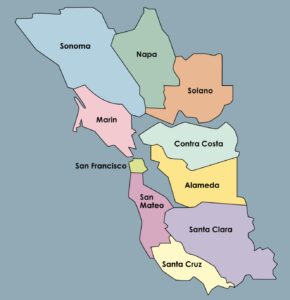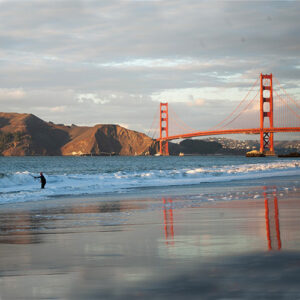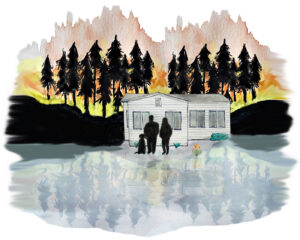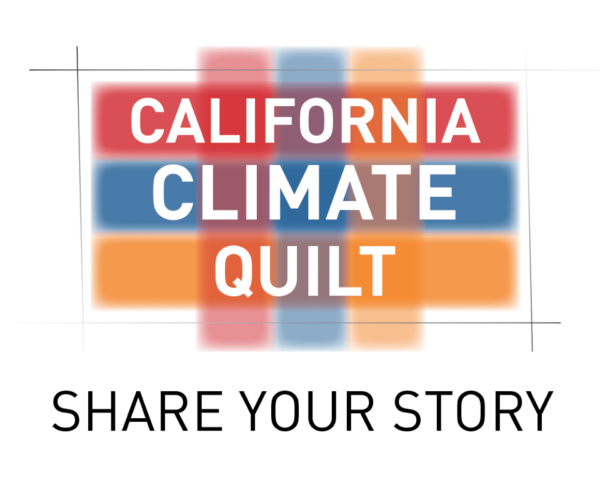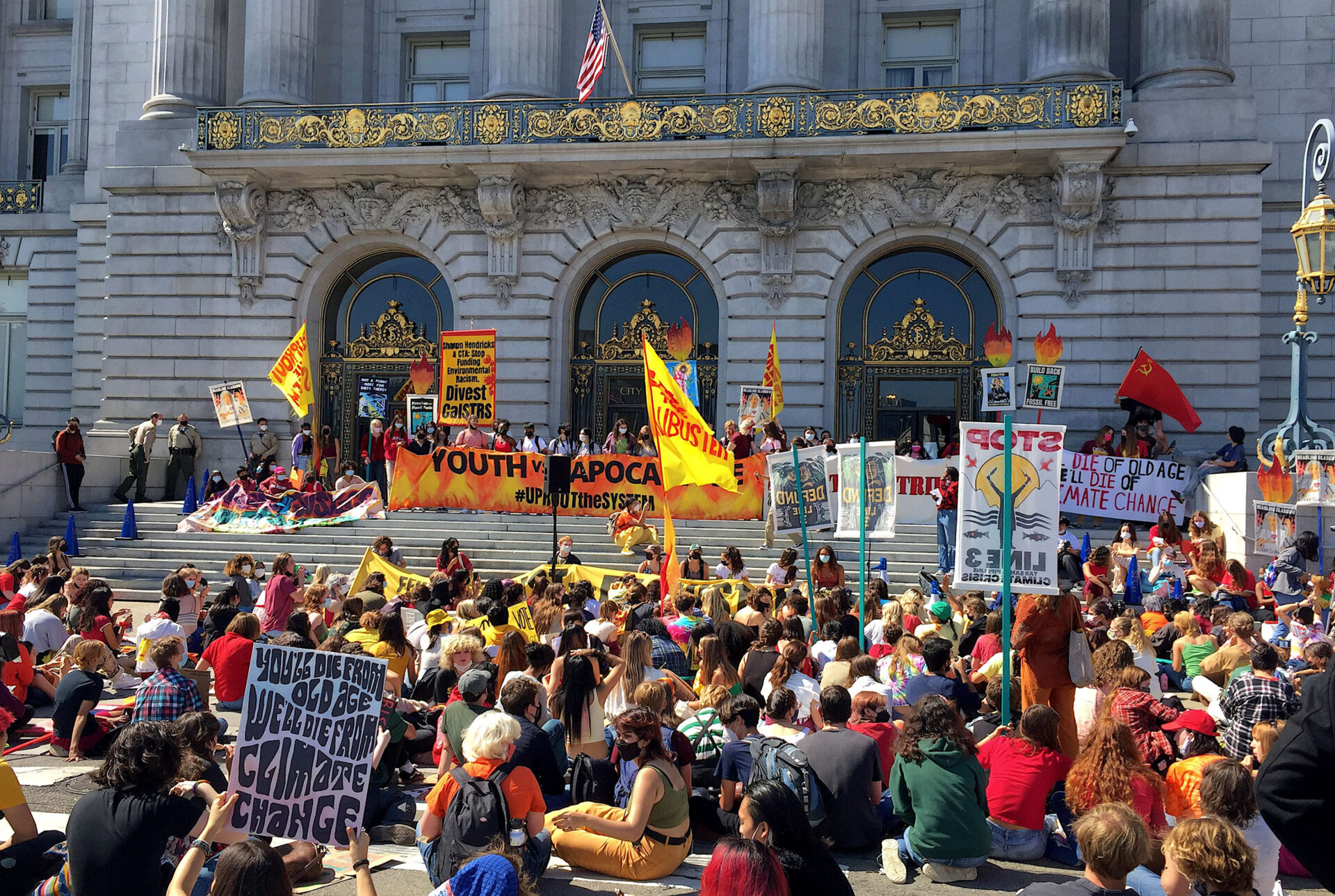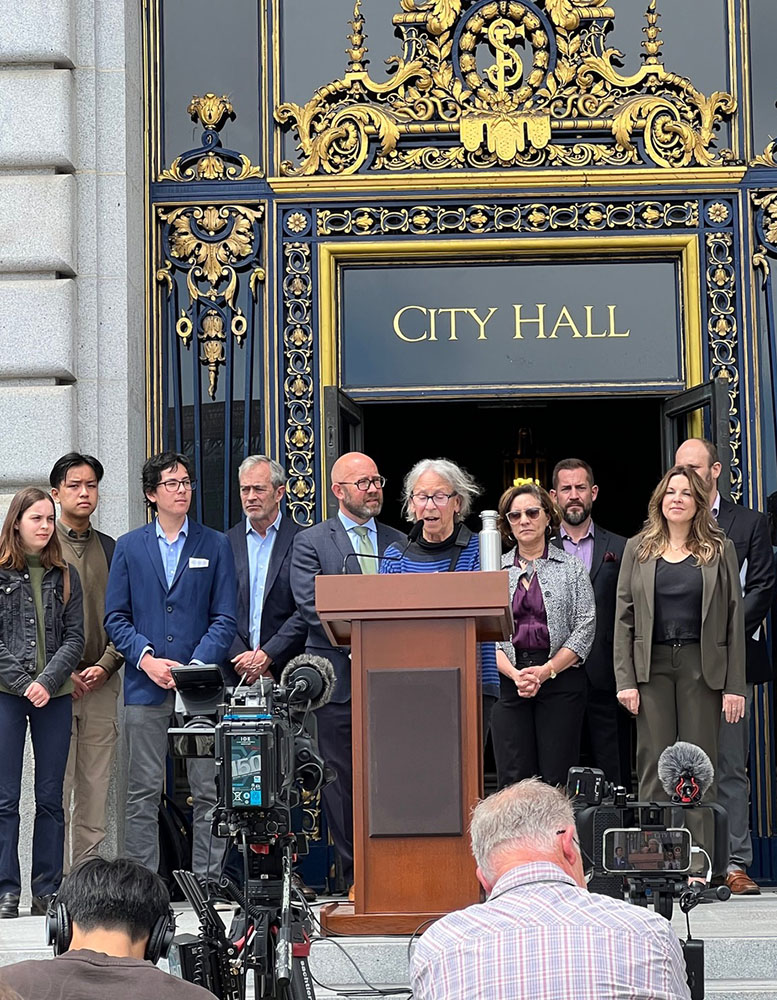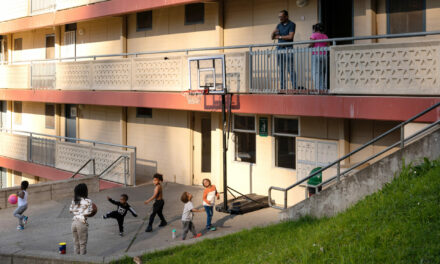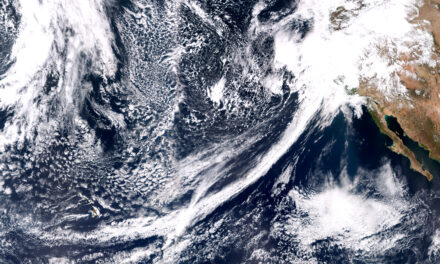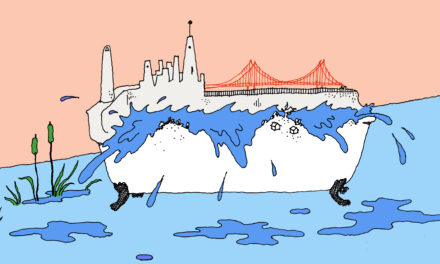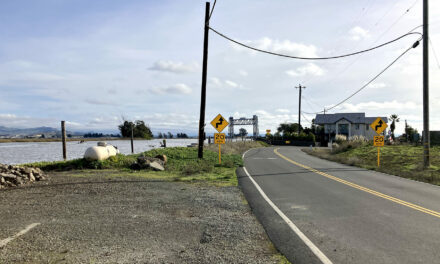Feds Ghost Climate Action But Locals Stay the Course
Of the dozens of climate groups battling for change in the Bay Area, which one is for you? This primer kicks off a series exploring local climate action.
Responding to a protest at its San Francisco headquarters in March, EPA Administrator Lee Zeldin said, “We are driving a dagger through the heart of the climate change religion.”
In July, Zeldin announced plans to reverse a 16-year-old EPA finding that greenhouse gases pose a danger to public health. If the plan succeeds, it will gut the federal government’s ability to rein in the emissions that cause climate change.
With the Trump administration turning climate change denial into federal government policy, climate action at the state and local level becomes even more essential. According to Ryan Schleeter, communications director for The Climate Center, “What we do in California to address the climate crisis has a ripple effect across the world.”
The Climate Center is one of hundreds of Bay Area climate action groups that bring the efforts of thousands of people to bear on mitigating and building resilience to the climate crisis. Each of these groups has its own personality; no two are the same. Though they may share a common goal of halting climate change, their histories, methods, focal issues, and even member demographics vary. This article offers a brief primer on what’s out there.
All Shapes & Sizes
On the national stage, the largest and most familiar organizations stand on the shoulders of climate heroes. Many have local chapters.
-
- Since author/activist Bill McKibben founded 350.org in 2008, 350 Bay Area has amassed 21,000 followers.
- Four years after Al Gore founded the Climate Reality Project in 2011, the first chapter was born here in the Bay Area.
- Citizens’ Climate Lobby, a major force in influencing state and local climate policy, forged its political will from the inspiration of its founder, the late poverty and climate activist Marshall Saunders.
- A giant among groups engaged in climate action, the Sierra Club has addressed environmental issues since it was founded in 1892 by John Muir.
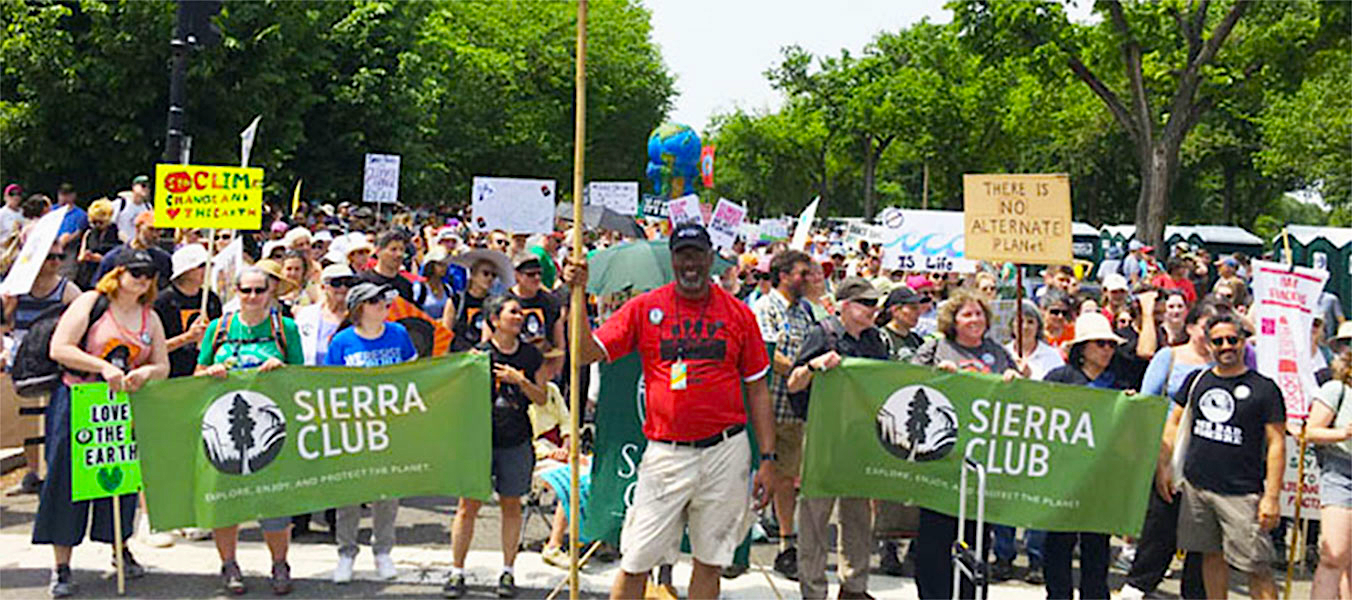
Marching to block coal. Photo: Tom Valtin
Larger groups such as these are able to take on multiple climate policy issues in local communities, throughout the state, and across the nation. Most other groups have necessarily adopted a narrower focus.
Groups such as the Transbay Coalition, for example, have the singular goal of promoting efficient, low-emissions transit systems. Cofounder Carter Lavin says they’re looking for “people who want to make it easier to get around by transit, foot, bike, or wheelchair in their community and throughout the Bay Area.”
On the flip side, groups such as the Marin/Sonoma Electric Vehicle Squad advocate for government policies that create infrastructure and incentives for electric cars. Despite their very different focuses, the efforts of both transit and EV promoters result in the same positive result — lowering the Bay Area’s greenhouse gas emissions.
One way or another, nearly all climate groups try to impact public policy. Interviews with some of the leaders of these groups reveal that their methods, focuses, and points of view are deeply rooted in their origin stories.
Pulling Together
They call themselves the San Francisco Climate Emergency Coalition, but cofounder Joni Eisen wishes they hadn’t. “Coalition makes us sound like we’re made up of a bunch of different climate groups. We’re not. We’re individuals from different groups working together on climate policy.”
As a board member of the environmental group San Francisco Tomorrow, Eisen organized two panel discussions in 2018 titled ‘Climate Action in the City.’ She says that afterward, panelists wanted to continue to collaborate on climate action. So, she gathered members of 350 SF, SF Bay Physicians for Social Responsibility, the Bay Area Clean Air Coalition, and Quit Carbon to zero in on City Hall. They teamed up with San Francisco Supervisor Rafael Mandelman to launch the emergency coalition. Mandelman convinced the Board of Supervisors to unanimously pass the 2019 San Francisco Climate Emergency Resolution.
Since then, the coalition has helped the SF Environment Department fund the development of the city’s climate action plan and create a building decarbonization program. Though they were finally able to convince Mayor London Breed to allocate money from the city’s general fund to SF Environment three years ago, Eisen says their greatest frustration is that San Francisco mayors continually give them false hope.
Any San Franciscan can join the coalition’s efforts by clicking “Take Action Now” on the group’s website. The group then points the way, providing SF supervisors’ emails, a summary of local climate issues, and a sample message to send with talking points for public advocacy.
Oil and Flowers
Across the bay, another climate group came into being with a bang. Literally.
“It was a catastrophic refinery event that caused the formation of the Sunflower Alliance,” recalls cofounder Shoshana Wechsler. “When Chevron exploded, I saw that plume from my house, that Godzilla-like plume that stretched across the entire bay.”
The massive fire that erupted at the Chevron refinery in Richmond on August 6, 2012 resulted in a countywide emergency response. Fifteen thousand people sought treatment at area hospitals.
“I’d been politically active my entire life,” Wechsler says, “but I said to myself, ‘Why am I not working on issues right in my own backyard?’”
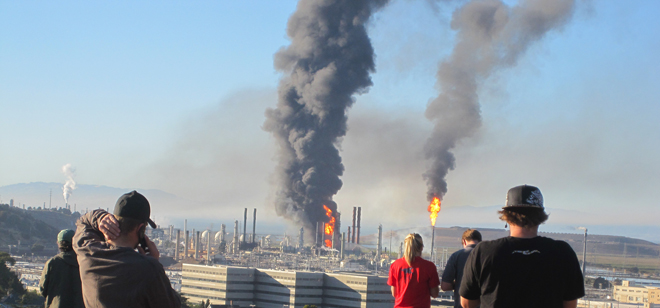
Chevron explosion in 2012. Photo courtesy Communities for a Better Environment
A year after the Chevron fire, Wechsler helped organize a 4,000-strong march on the Richmond refinery. After the protest, she got together with 80 other activists, fired up about what they’d achieved. They decided they liked working together and formed an alliance.
Because of their history of use in bioremediation and hydrocarbon cleanups, many of the Chevron protestors carried sunflowers. Thus, the name. Wechsler laughs, explaining, “I was the only one in the room who voted against it. I thought it was too hippie.”
Bill McKibben didn’t have a say in the name, but he spoke at the march. Wechsler recalls that afterward, he said, “Take it to the refineries.”
Sunflower Alliance has been doing just that ever since. They have informed county and state government officials of refinery clean air violations and have amassed 4,000 newsletter subscribers, knitting them together in a network of community activists. Because of the media attention they’ve achieved, locals have alerted them to new issues.
“In the spring of 2020, we got an email from a guy who lives in Rodeo,” Wechsler recalls. “He said that he worked for Caltrans and had come across an application for new oil drilling. He asked if we knew anything about it.”
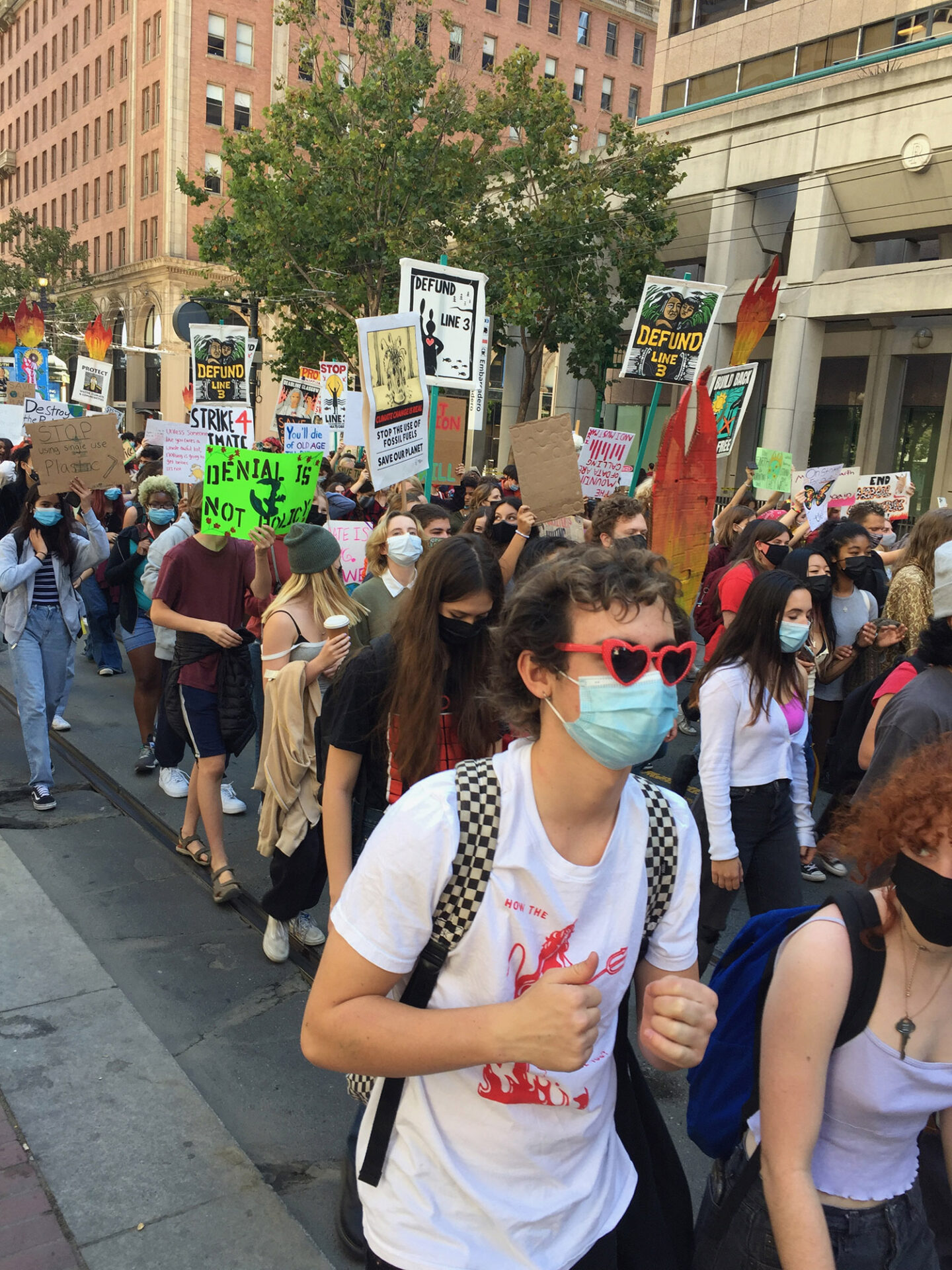
Marching on San Francisco’s Market Street to defund a US-Canada oil and gas pipeline known as “Line 3.” Photo courtesy Dave Rhody
She was astonished by the very idea of new oil wells in Contra Costa County and enraged when she discovered that state officials planned to approve the permit. “This turned into a massive campaign to end oil and gas drilling in the county.” The ongoing campaign has already resulted in oil drilling bans in Antioch and Brentwood.
The Sunflower Alliance has also urged the county and the State of California to develop a just transition program. Little had been done to develop new jobs to replace all of those lost to the refinery closures. When the Marathon Martinez refinery idled in 2020, 700 workers lost their jobs. Valero’s Benicia refinery closure in 2026 will add another 400 job losses.
While she’s proud of Sunflower Alliance’s extensive community network, Wechsler feels indebted to their brain trust, the East Bay Refinery Transition Workgroup. This handful of scientists has access to refinery data and policy reports; she says their meetings are like an “ongoing seminar in fossil fuel science. I think being as granular as possible with these issues is absolutely crucial.”
Standing on Big Shoulders
When asked about the key benefit of joining the Climate Reality Project, Wei-Tai Kwok says, “It’s Al Gore — getting trained by Mr. Gore, having access to the latest information, and learning to communicate the facts, the reality of the climate crisis.” Kwok is a founding member of Climate Reality Bay Area.
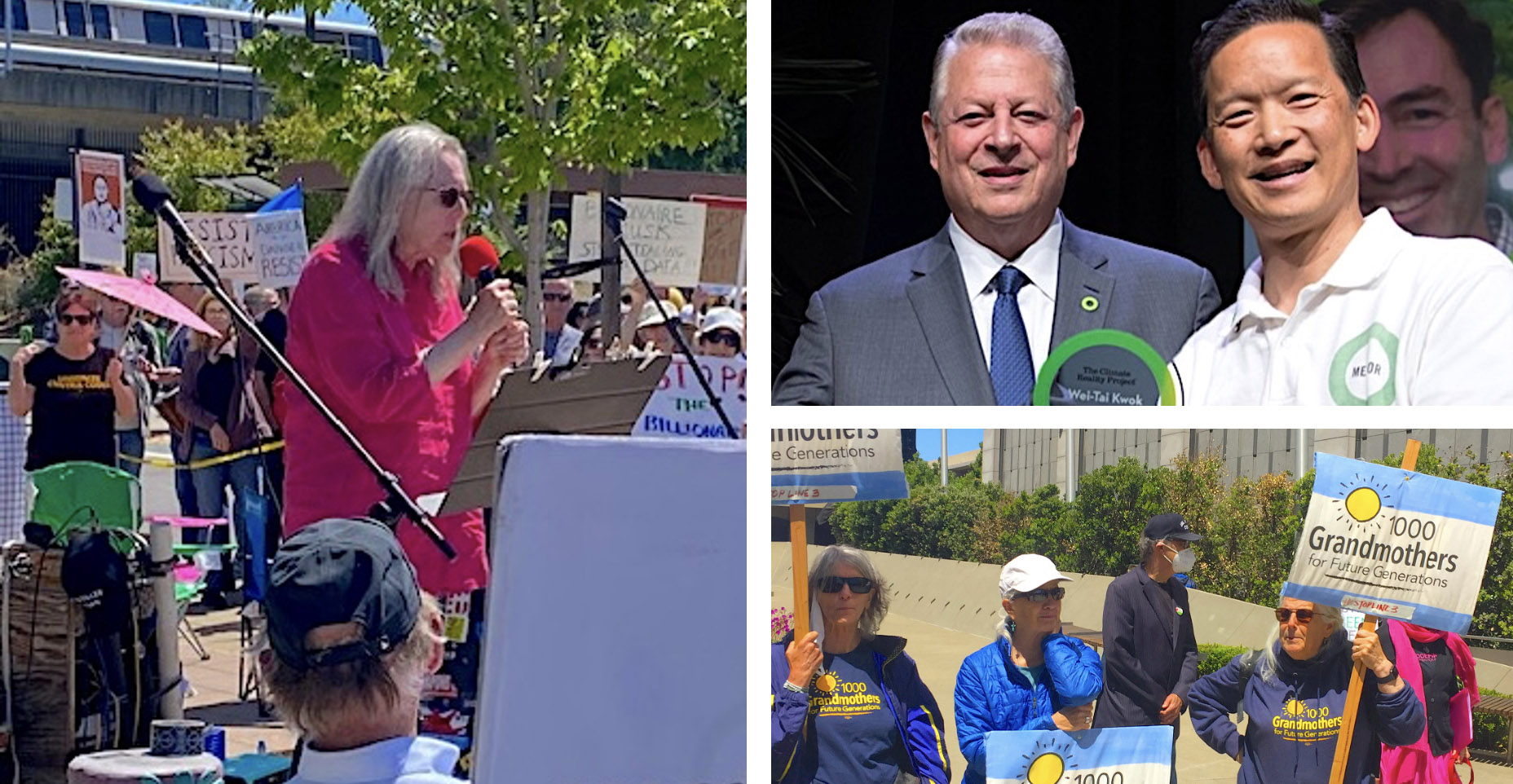
Sunflower’s Shoshana Wechsler (left); Kwok & Gore (top right); 1000 Grandmothers (bottom right). Photos courtesy Dave Rhody.
Three years after watching the 2006 documentary An Inconvenient Truth, Kwok found himself sitting in a meeting of a local Chinese-American organization listening to a 14-year-old named Taylor Francis talk about climate change. Realizing that Francis was replicating the points Al Gore explained in the film, he says, was “amazing.”
It was the first Kwok had heard of Gore’s push to train climate leaders. In 2011, using proceeds from An Inconvenient Truth, Gore combined two environmental groups to launch The Climate Reality Project. At the outset, the project’s core activity was to train 1,200 climate leaders. Each trainee pledged to go back to their community and deliver at least 10 climate presentations, just like the one Kwok heard from Francis.
At that time, Kwok had been working in the solar industry and was “very frustrated by the slow progress we were making as a society.” After training with Gore in Chicago in 2013, he came back “super motivated,” only to find he wasn’t allowed to connect with other trainees in Northern California due to “privacy issues.”
“That was so stupid,” he says. Kwok found a way to contact the new president and CEO of the Climate Reality Project. Ken Berlin was not only open to the idea but suggested that Kwok use the contact list of trained Northern California climate leaders to plan a meeting.
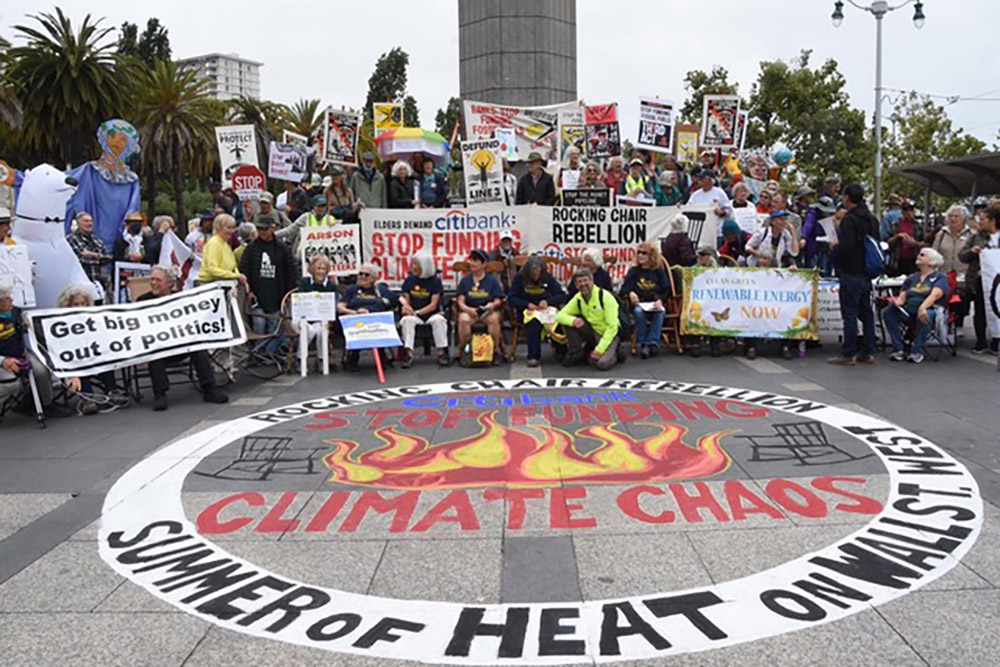
Photo courtesy Dave Rhody
In 2015, climate leaders came together for the first meeting of what would become the project’s Bay Area chapter. It was the first of more than 150 chapters that now operate across the U.S.
Kwok says that when his chapter expanded their mission from climate education to government policy, they learned a great deal from leaders of the Citizens’ Climate Lobby but had to work hard to get members to “flex their democracy muscles.” That became easier with the election of Donald Trump in 2016. “In the trajectory of what had been happening in previous years, that was the best recruiting tool we could have had.”
Climate Reality Bay Area has since grown to 2,200 members, the largest chapter in the country.
Passing the Torch
The climate crisis demands long-term commitment — but in many Bay Area groups, the people leading the charge are closer to retirement than to high school graduation. Kwok notes that of the 36,000 climate leaders trained by the Project, the majority are over 50. Shoshana Wechsler expresses concern about the Sunflower Alliance, saying, “We’ve gone through some shrinkage in the past couple years. Frankly, we’ve had a couple of deaths. We have people who are aging out.”
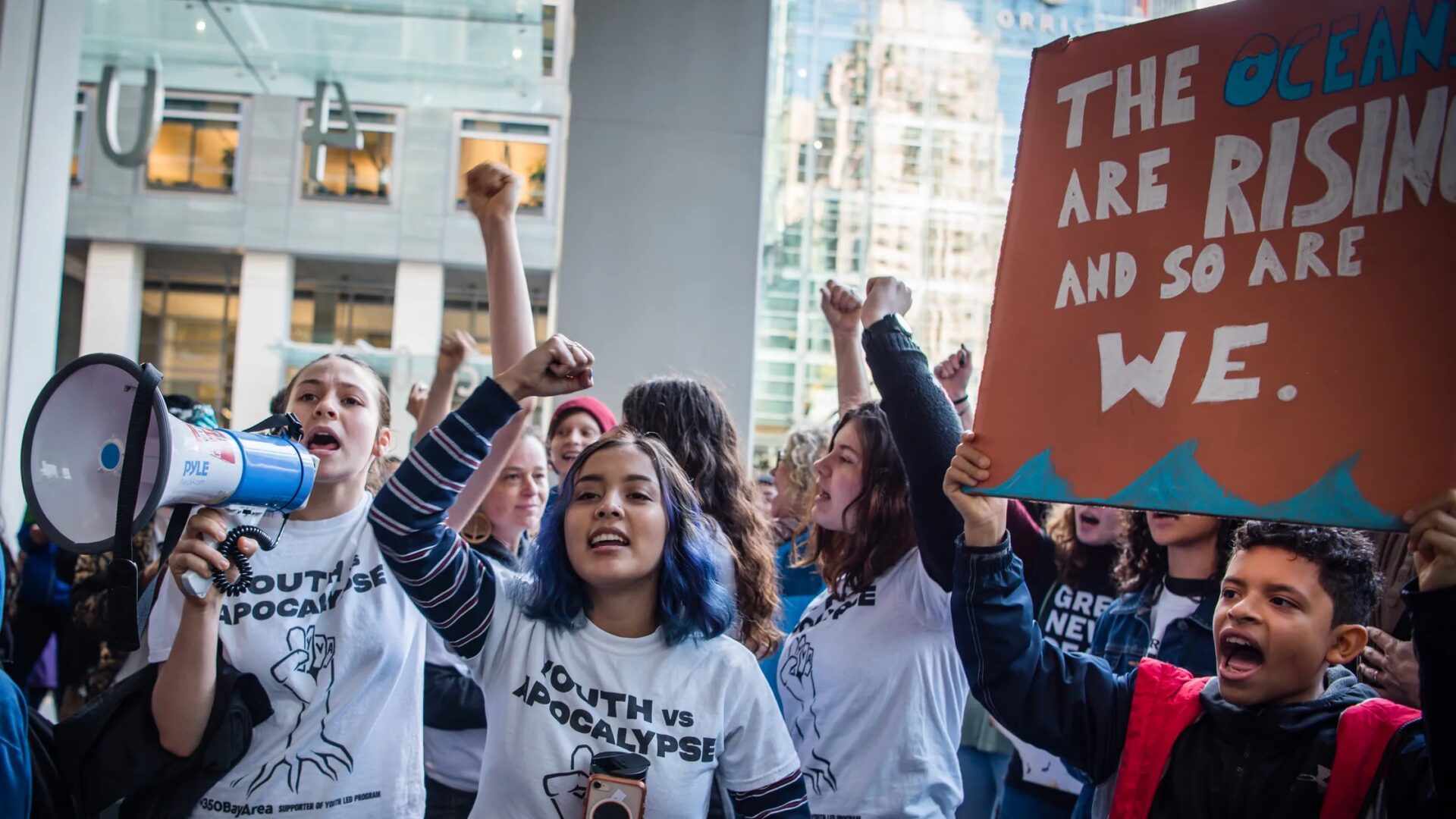
Youth V Apocalypse march.
Retirement jumps out as an obvious reason for the dominance of the older demographic in some climate groups. Retired folks have the time to attend a 1 P.M. board of supervisors meeting or spend a morning writing to state senators. Also, many baby boomers were activists in their youth.
That’s not to say that millennials and Gen Z are not aware and engaged. Most learned about the grim reality of climate change in middle school or high school. More than a million of them protested in Greta Thunberg’s Fridays for Future global strike in 2019. Youth Vs Apocalypse is focused on the next generation, and let’s not forget Taylor Francis, the young climate leader who first caught Wei-Tai Kwok’s attention. At 14 in 2009, he was then the Climate Reality Project’s youngest climate leader.
As the Trump administration continues to assert outright hostility toward climate action, all Bay Area climate groups — young and old, large and small, with their unique focuses and affiliations — have their work cut out for them.
As Joni Eisen, cofounder of the San Francisco Climate Emergency Coalition, stated emphatically, we must all “demand that our policymakers remember that there really is an emergency, and act like it.”
What Else Is out There?
Location, Location
Most climate action groups welcome anyone, with the caveat that residency is essential to local policy advocacy. A San Francisco resident, for example, will have little impact speaking up at an Oakland City Council meeting. The names of most local policy action groups are self-defining (Sustainable Solano, Napa Green, the San Francisco Climate Emergency Coalition, etc.).
Age & Beauty
Some climate groups are forged around the identity of their members. That doesn’t mean they don’t share the same goals. Youth Vs Apocalypse and 1000 Grandmothers for Future Generations, for example, share the same concerns and use similar methods to effect change despite the generational difference. Both favor public advocacy and have had a strong presence at nonviolent public protests.
Shared Cultures
Climate groups are also formed around their shared beliefs or the cultural background they have in common. Since 1993, the Asian Pacific Environmental Network (APEN) has built its membership around Southeast Asian refugees in Richmond and Chinese immigrants in Oakland. More recently, they’ve expanded with programs in Los Angeles and reached out to communities across California.
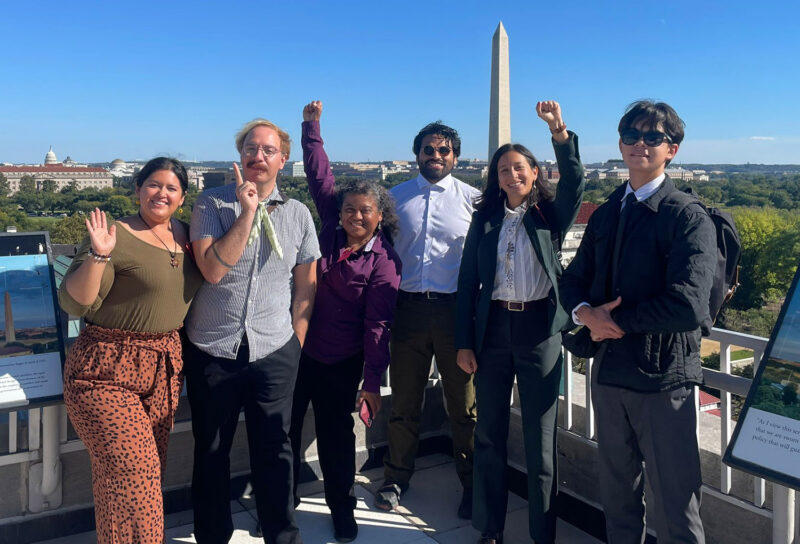
Another group formed around cultural solidarity, GreenLatinos confronts environmental issues that impact Latino communities. Dr. Camila Cáceres, Oakland-based Water Equity and Ocean Advocate for GreenLatinos notes that “the impacts of climate disasters on the Latino community are one of the program’s priorities.” Pedro Hernandez, GreenLatinos state program manager, notes that they’ve been uniting Latinos around environmental issues for 15 years, “advocating on the state level for water rights for small Latino communities.”
Faith-Based
With most of the membership concentrated in the Bay Area, California Interfaith Power & Light extends its reach across the state. They engage faith communities, raising awareness and advocating for climate justice.
Spectrum of NGOs
There are other differences among groups, too. Some are entirely member-driven while others, such as 350 Bay Area, are led by paid staff.
While nearly all climate groups are nonprofits, the difference in the groups’ legal standing defines how they can operate. The Sierra Club, Citizens’ Climate Lobby, and 350 Bay Area Action, a sister group to 350 Bay Area, are all 501(c)(4) organizations, which lets them endorse political candidates and engage to some degree in partisan political activity (though donations are not tax-deductible). Most, however, are 501(c)(3) organizations, which require that their advocacy for or against government policies needs to be nonpartisan, and they cannot support or oppose a political candidate.
Full disclosure: The author of this article trained with Al Gore as a climate leader and is currently a member of Climate Reality Bay Area.
MORE
Fill out our Climate Action Group survey!
Thank you to the 16 groups who responded, but we know there are at least 50!
Your response will help us build a shareable database.

